In the heart of the Vaucluse region, the Gorges de la Nesque offer a breathtaking natural spectacle. This wild canyon, carved out by the River Nesque between Monieux and Méthamis, reveals vertiginous cliffs and exceptional biodiversity. Classified as a Biosphere Reserve by UNESCO, these gorges invite you to discover them on foot, by bike or by car, to admire the breathtaking scenery and explore the hidden treasures. In just a minute, we'll show you the most beautiful spots in the Gorges and everything you need to know about visiting them.
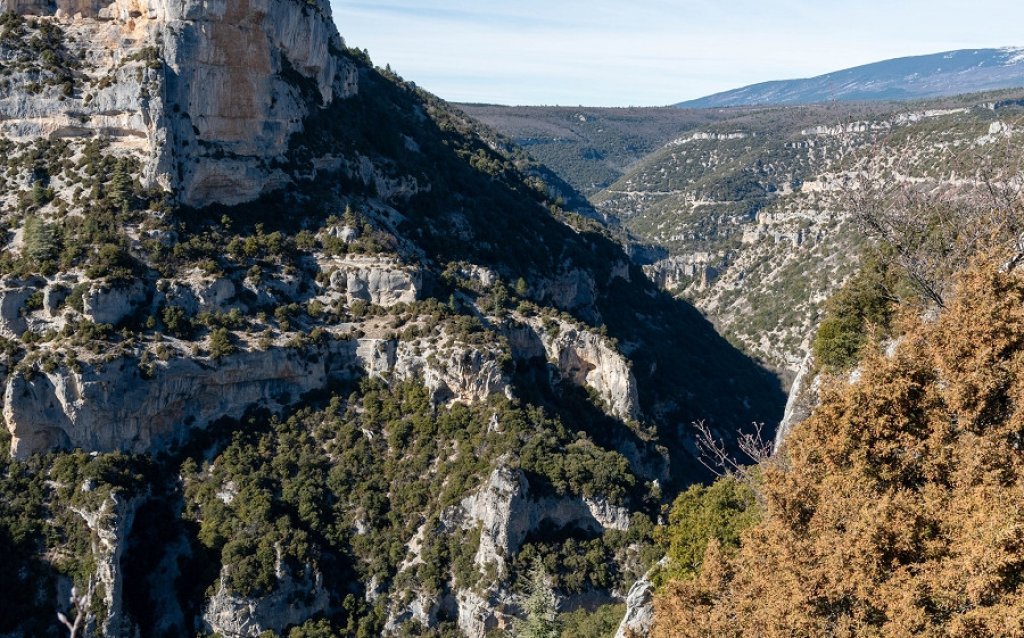
A spectacular canyon in the heart of Provence
Where is the Gorges de la Nesque? Between Monieux and Méthamis
The Gorges de la Nesque stretch for some twenty kilometers between Monieux and Méthamis. Beginning at an altitude of 625 metres south of Monieux, they plunge down to 270 metres at Méthamis. This spectacular vertical drop creates a landscape of contrasts.
In places, the canyon reaches depths of 400 metres. Limestone cliffs over 200 metres high line the bed of the Nesque, which is often dry in summer.
The D942 road, built in 1911, winds along the gorge. It offers breathtaking views, particularly from the Castellaras belvedere overlooking the majestic Rocher du Cire.
The site is home to remarkable wildlife, including golden eagles and peregrine falcons, which nest in the rock faces.
Geological formation and impressive depth
The Gorges de la Nesque reveal a fascinating geological history. Formed millions of years ago, they are the result of intense erosion of the limestone plateau by the River Nesque. The rock strata exposed date mainly from the Lower Cretaceous, with a predominance of Urgonian and Bedoulian limestone.
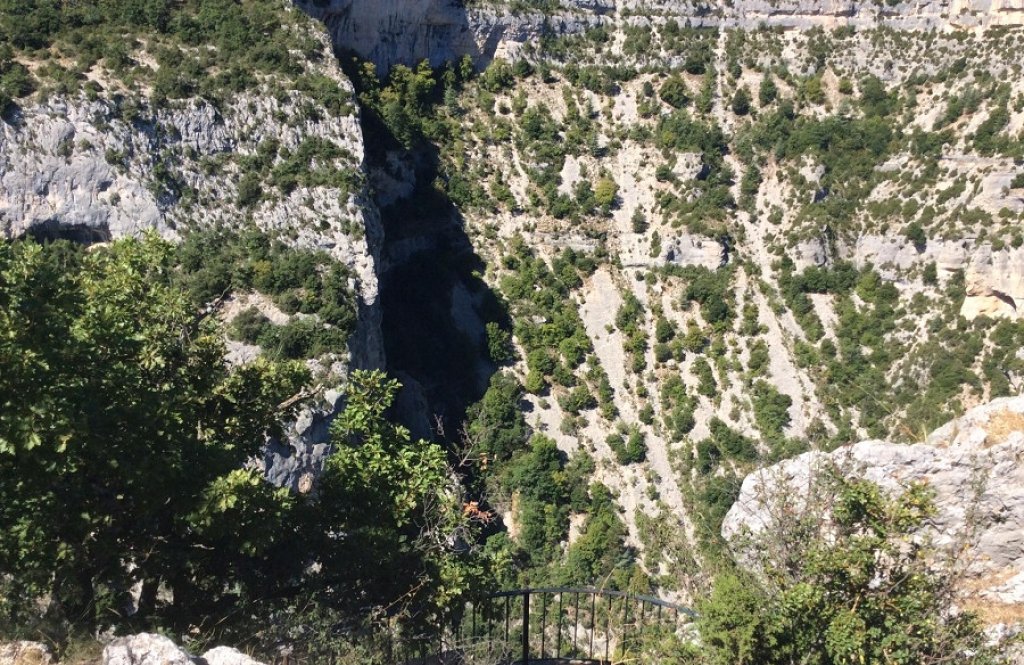
The erosion process has sculpted remarkable formations such as the Rocher du Cire, composed of massive white limestone from the Lower Bedoulian period. The action of water has also created a complex karstic network, with caves and underground cavities.
The unique geological structure of the gorges contributes to their exceptional biodiversity, offering varied habitats for many rare plant and animal species.
Where to swim in the gorges de la Nesque?
Although the gorges de la Nesque are not renowned for their bathing areas, there are a few refreshing spots for the adventurous. The Bourguet lake, located at the entrance to the gorges near Monieux, offers a pleasant setting for an aquatic break.
Further downstream, a number of natural pools form along the watercourse, particularly after the spring rains. These ephemeral pools attract hikers looking to cool off.
Bear in mind that the flow of the Nesque varies considerably with the seasons. In summer, the riverbed is often dry. For more reliable bathing, the Lac des Salettes in Mormoiron, close to the gorges, offers a supervised beach in season.
The Nesque valley: unique biodiversity
Remarkable flora and fauna on the Natura 2000 site
The Gorges de la Nesque Natura 2000 site is home to a mosaic of ecosystems conducive to remarkable biodiversity. These include
Fabre's Nivéole, a rare endemic plant
Six species of bat listed in Annex II of the Habitats Directive
Golden eagle and peregrine falcon, nesting on the breathtaking cliffs.
Arid slopes contrast with wet combes, creating a variety of micro-habitats. This diversity favors the presence of Mediterranean and Alpine species, making the Gorges de la Nesque a veritable ecological crossroads. Preserving this exceptional natural heritage requires appropriate management and raising public awareness of conservation issues.
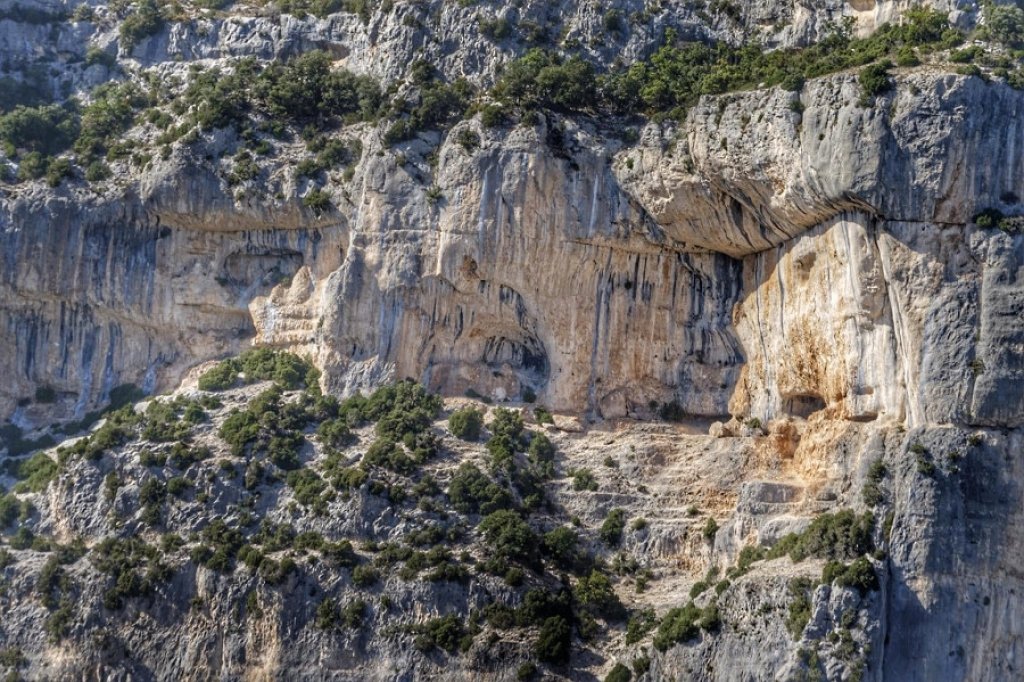
Gorges honey: a local gustatory treasure
The Gorges de la Nesque offer an exceptional terroir for beekeeping. The varied environment, combining scrubland and woodland, gives local honey its unique flavours. The region's beekeepers harvest mainly lavender, thyme and rosemary honeys.
The floral richness of the gorges is reflected in the complex aromatic notes of these honeys. Their creamy texture and golden color testify to the quality of the preserved environment.
Several local producers offer their honeys for direct sale, enabling visitors to discover this authentic product. This activity contributes to the local economy while preserving the region's beekeeping traditions.
Explore the Gorges de la Nesque
Hiking itineraries for all levels
The Gorges de la Nesque offer a variety of trails to suit all walkers. For beginners, the Lac du Bourget circuit offers an easy 3 km stroll around a peaceful lake. More experienced hikers will appreciate the sentier des Maquisards, an 8 km loop through spectacular scenery.
The flagship route is to the Chapelle Saint-Michel, nestled in the heart of the gorge. This medium-difficulty hike stretches over 6 km round trip, rewarding walkers with breathtaking views over the canyon.
For long-distance hikers, the GR de Pays Tour du Massif du Ventoux covers the heights of the gorges over several days. Don't forget suitable footwear, plenty of water and a hat to make the most of these magnificent hiking trails.
Cycling and mountain biking: a challenge for cyclists
The Gorges de la Nesque offer cyclists an exceptional adventure terrain. The D942 route, with its 22 km of gradual ascent, has a vertical drop of 423 meters, putting pedal cyclists' endurance to the test.
For mountain bikers, the “Aux portes de la Nesque” circuit offers a technical 22 km loop. The route alternates between vineyards, orchards and panoramic views of Mont Ventoux.
Cyclists will particularly appreciate
the Castelleras belvedere, the highest point with its breathtaking views
The tunnels cut into the rock, adding a touch of adventure
The descent to Monieux, rewarding the efforts of the climb.
For the best experience, set off early in the morning to take advantage of the cooler weather and reduced traffic.
The tourist route: discover by car
The D942 winds majestically through the Gorges de la Nesque, offering motorists breathtaking panoramas. This adventure begins in Villes-sur-Auzon and stretches 21 km to Monieux.
Along the way, several stops are worth making:
The Castelleras lookout, facing the Rocher du Cire
The tunnels dug into the rock, testimony to human ingenuity
The view of Mont Ventoux, dominating the horizon
Allow 1h30 to fully enjoy this escapade. Drive carefully: the narrow roadway requires constant attention. For the best experience, opt for an early start, when the light sublimates the limestone cliffs and the traffic remains fluid.
Not-to-be-missed points of interest
Rocher du Cire: a natural belvedere
The Rocher du Cire majestically dominates the Gorges de la Nesque, offering a breathtaking vantage point at an altitude of 650 metres. This impressive limestone formation takes its name from the wild bees that once nested here.
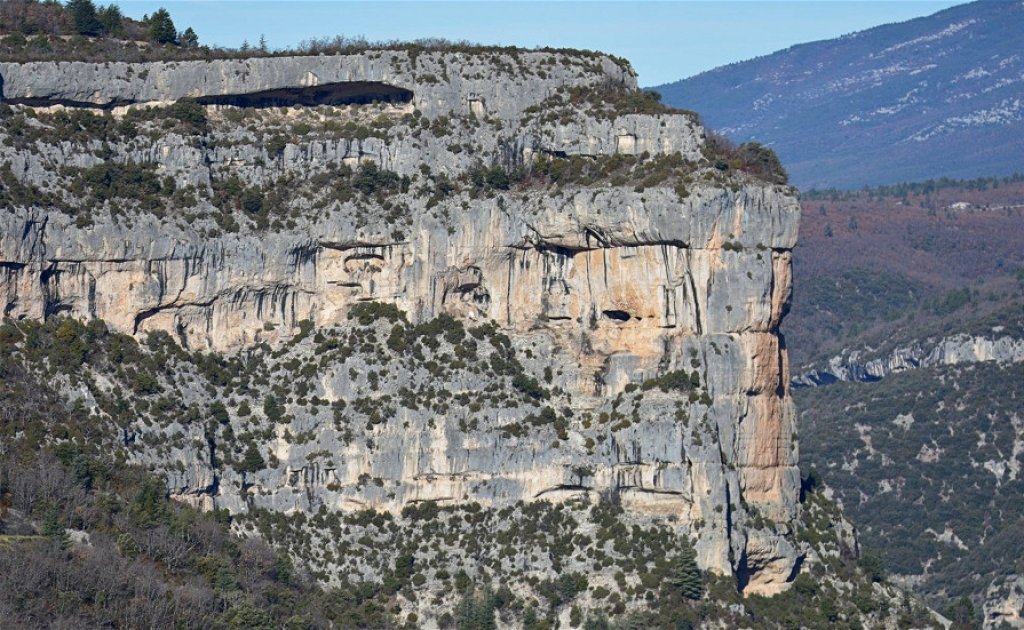
At the Castellaras belvedere, a stele honors Frédéric Mistral, the famous Provencal poet who immortalized the site in his work “Calendal”. Visitors can read verses engraved in Provençal, testifying to the cultural importance of the site.
The climb to the summit rewards hikers with a 360° panorama of the gorges and Mont Ventoux. Photographers will particularly appreciate the golden light of sunset, which sets the rock ablaze and creates fascinating shadow effects.
For geology buffs, the Rocher du Cire is a perfect illustration of the karstic erosion characteristic of the region.
Chapelle Saint-Michel: a troglodyte gem
Nestled in the heart of the Gorges de la Nesque, the 12th-century Chapelle Saint-Michel d'Anesca bears witness to a rich religious past. This Romanesque structure, nestled beneath an imposing rock overhang, is fascinating for its harmonious integration into the karstic landscape.
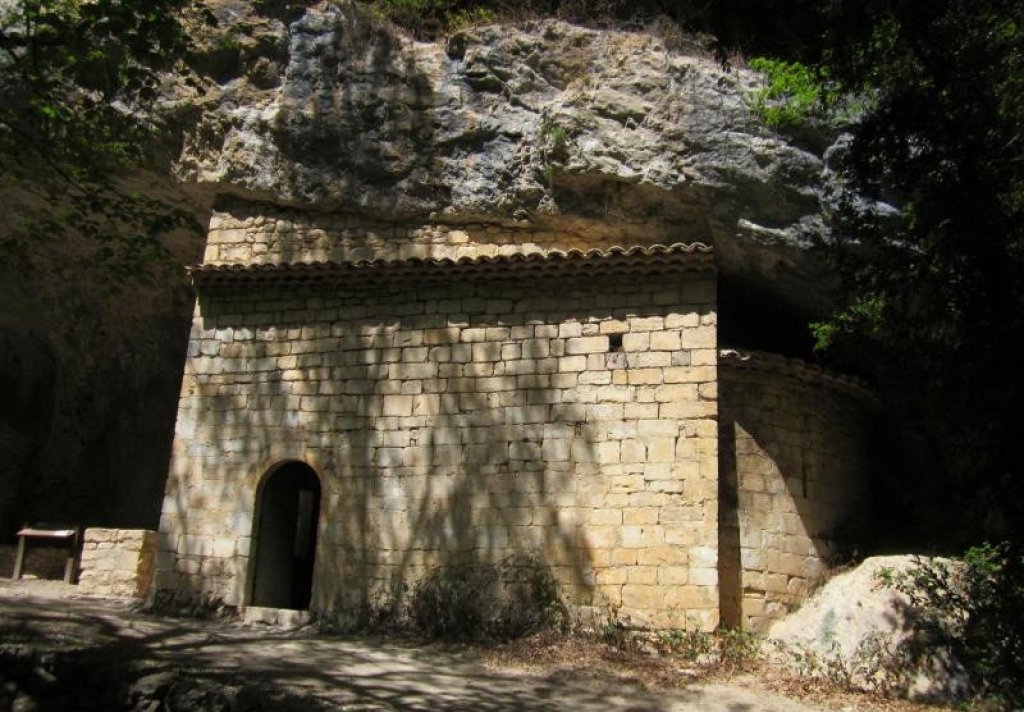
The building, restored in 1643, features an arched door decorated with a fresco depicting the Archangel Michael. Inside, the altar welcomes numerous messages from pilgrims, perpetuating a centuries-old tradition.
Above the chapel, two prehistoric shelters reveal human occupation dating back 150,000 years. This place steeped in history offers a unique spiritual experience, combining wilderness and cultural heritage. A visit to this sanctuary reveals a little-known part of Provence's heritage.
Plan your visit to Gorges de la Nesque
Best season and practical advice
Spring and autumn offer ideal conditions for exploring the Gorges de la Nesque. Mild temperatures and nature in full bloom make these seasons particularly pleasant for outdoor activities.
Bring sturdy hiking boots, sun protection and plenty of water, whatever the season. You'll need a camera to capture the breathtaking scenery.
For a serene visit, arrive early in the day to take advantage of the calm and early morning light. Summer weekends can be very busy, so opt for weekdays if possible.
Don't forget to respect the environment by staying on the marked trails and taking your garbage with you. The preservation of this exceptional site depends on the responsibility of every visitor.
Where to stay nearby: from Sault to Bédoin
The region between Sault and Bédoin is packed with accommodation options to suit all budgets. Gîtes ruraux offer an immersion in the atmosphere of Provence, with breathtaking views of lavender fields and Mont Ventoux. For a unique experience, opt for a night in a cabin perched among the evergreen oaks.
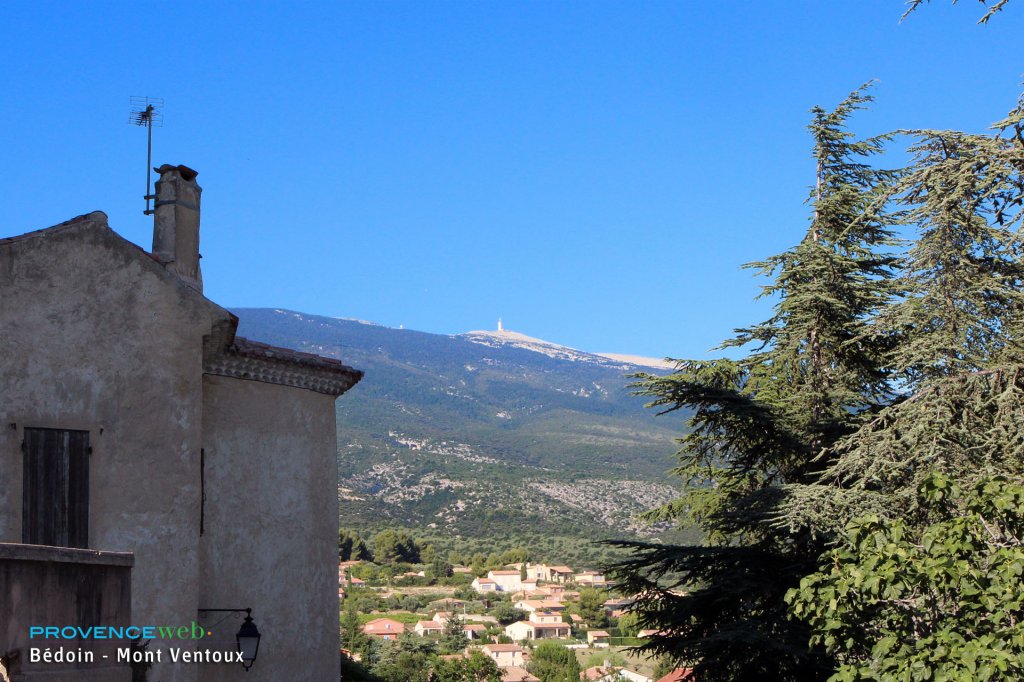
Charming B&Bs abound, often featuring local produce for breakfast. Campsites, meanwhile, let you sleep under the stars, lulled by the song of the cicadas.
Here are a few noteworthy addresses:
L'Auberge du Lac in Monieux, ideal for cyclists
Domaine des Tilleuls in Sault, with its swimming pool and aromatic garden
Les Lavandes de Champelle in Bédoin, a haven of peace at the foot of the Ventoux.
Book early in high season to guarantee your stay in this enchanting setting.
The Gorges de la Nesque and Mont Ventoux
Combine a visit to two emblematic sites
A well-thought-out itinerary allows you to explore Mont Ventoux and the Gorges de la Nesque in a single day. Start with an early-morning ascent of the Giant of Provence from Bédoin, enjoying the fresh air and unobstructed views.
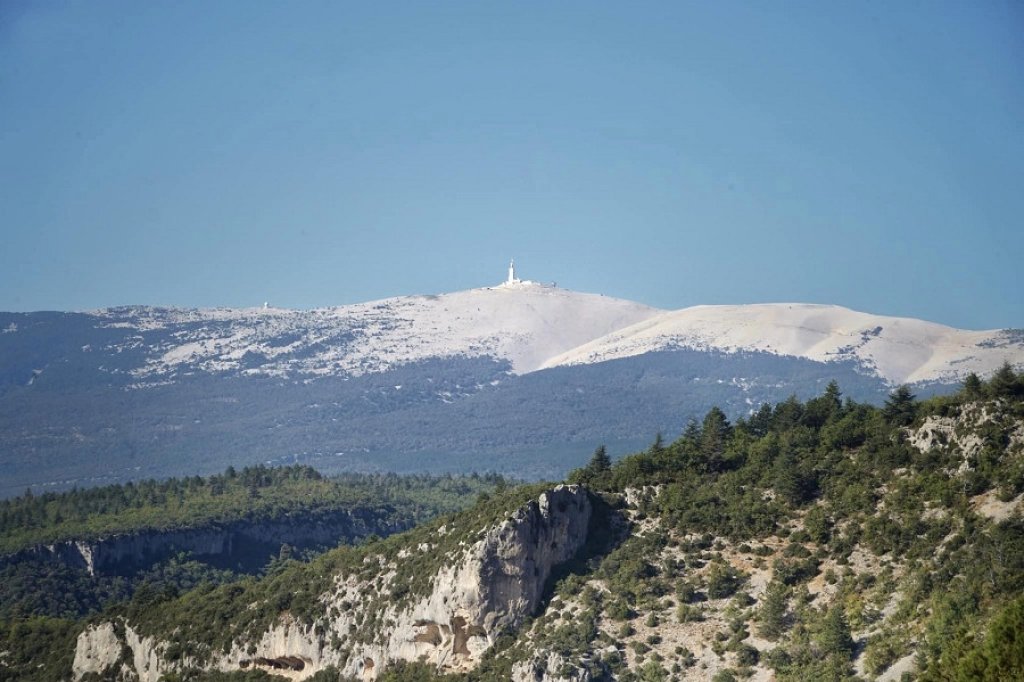
After the descent, take the D942 towards Sault to plunge into the Gorges de la Nesque. Stop off at the Castellaras lookout to admire the panorama.
End your journey in Monieux, the ideal starting point for a short hike in the depths of the gorges. This 80 km loop combines sporting challenges and natural discoveries, offering a summary of the Vaucluse's emblematic landscapes.
Preservation and future of the Gorges de la Nesque
The protection of the Gorges de la Nesque is based on concrete and innovative actions. The Mont-Ventoux Regional Nature Park recently set up a program to monitor endangered species, using cutting-edge technologies such as drones to track golden eagle populations.
Ecological restoration efforts are underway, including the reintroduction of endemic plants and the fight against invasive species. An ambitious project aims to create ecological corridors linking the gorges to the surrounding natural areas.
Environmental education plays a crucial role. Interactive educational trails are being developed, enabling visitors to discover the richness of the site while minimizing their impact. Sustainable tourism management remains a priority, with the planned introduction of electric shuttles to reduce car traffic in sensitive areas.

